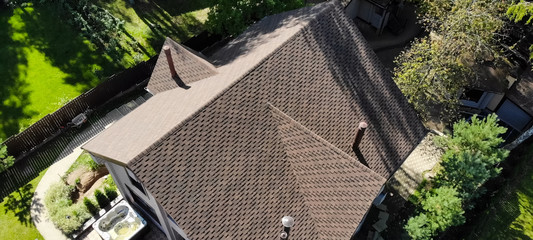
The roof is the top covering of a building, protecting against rain, snow, sunlight, and extremes of temperature. It can be built in a variety of forms.
Some factors that influence a good roof include durability, longevity, and aesthetic compatibility with the design of the structure. Safety is also important.
Roof Structure
The roof structure is the foundation that supports the rest of the roof build-up, including shingles, insulation, and underlayment. It includes rafters and trusses that help distribute the weight of roofing materials evenly to prevent sagging or structural failure of the building itself. It also establishes drainage features like slope and layout.
A ridge board is a horizontal piece of timber (or metal) resting at the peak of your roof over the rafters. The rafters connect to the ridge board with rafter ties to create the framework of your roof’s internal structure.
Underpurlins are vertical beams that support rafters in longer spans and increase the stability of the trusses. They are typically located between trusses to prevent them from collapsing under the weight of sheathing or other roofing materials. Struts are attached to the under-purlins to transfer the load from rafters to strutting beams and maintain the stability of the trusses.
A dormer is a projection out of the side of your home. Dormers are usually built to allow the installation of a window. They can also be used to add more storage space in your attic. During the roof structure phase, drainage features like slope and layout are established to ensure rain, snow, and debris roll off your roof instead of collecting. This helps keep moisture out of the interior of your home, which can cause drywall damage and mildew and reduce the life of your insulation.
Roofing Materials
Whether you’re building a new home or replacing an old roof, the roofing materials you choose will have a significant impact on the appearance of your home and its resale value. Choosing durable, stylish roofing material that holds up well to years of wear and tear is key.
Wood shingles and shakes offer a natural and rustic aesthetic and are typically crafted from trees such as pine, red cedar, and cypress. These roofing materials also provide excellent fire resistance and can last up to 60 years.
Slate is a beautiful roofing material that’s often found in luxury homes. It’s also very durable and can withstand extreme temperature fluctuations, high winds, and hail. However, it’s expensive and requires a lot of care to maintain its integrity.
Other roofing materials that are commonly used include asphalt shingles, which are available in a wide variety of styles, from mission and Spanish-style round-topped tiles to flat slate designs. Metal roofing is another popular option, with options including galvanized steel and copper. It is generally installed on low-sloped roofs, although it can be used on steeper slopes as well.
Membrane roofing offers an alternative to shingle, shake, or tile roofs and is made from waterproof materials such as PVC, ethylene propylene diene monomer (EPDM), or the recycled tire-derived rubber EPDM. This type of roof is typically installed on flat or low-sloped roofs and comes in both self-adhered and hot-applied membrane styles.
Roofing Installation
The installation of your roof is a significant project that requires both skill and safety. The first thing a roofing contractor will do is get the property ready for the project by placing tarps around any plants or sculptures on your lawn, and covering open drains to prevent small pieces of debris from blocking them. Then they will move everything away from the house and set up their equipment.
Before starting, the crew will remove any existing roof covering and thoroughly inspect your attic to make sure the sheathing is still in good condition. Then they will install the underlayment. This is a waterproof material that protects the sheathing and framing from water and rot damage. The roofing contractor will place the first row of underlayment along the eaves nail it down with closed nails at the edges and spreading out further toward the middle. The next row will be overlapped with the first and nailed in the same way. This pattern will be repeated until the roof’s ridge is reached. The last row of underlayment will be fastened down over the ridge with close nails near the edge and more spread out toward the center.
Roof flashing is another crucial part of the roof’s protection. It is usually made of galvanized steel and is used to redirect water flow away from vital areas of the roof such as the eaves, valleys, chimneys, skylights, or vents. During the roofing installation, the roofer will determine whether your existing flashing is in good shape and can be reused or if new flashing needs to be installed.
Roofing Maintenance
A roof is the upper part of a building structure that protects against rain, snow, sunlight, wind, and extremes of temperature. Historically, roofs have been constructed in a variety of forms, including flat, pitched, vaulted, and domed as dictated by technical, economic, or aesthetic considerations.
In addition to removing debris, regularly cleaning a roof will help prevent water damage and moss growth. It will also allow for the inspection of the roof’s condition, and if necessary, repair minor problems like leaky spots before they get worse.
Regular maintenance will also ensure that your roof’s warranty remains valid. Most shingle manufacturers require that a verifiable maintenance program be in place for their warranties to remain in effect. Many re-roofing alternatives can be significantly less costly when the original shingles are still covered by the manufacturer’s warranty. Proper roof maintenance can prevent re-roofing or major repairs that could have been avoided with a good maintenance plan. It is also a key element in keeping home insurance premiums low. Trimming tree limbs that hang over the roof is also important to prevent them from breaking during stormy weather.